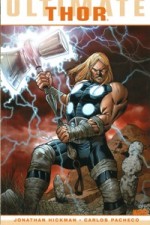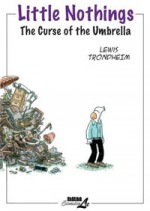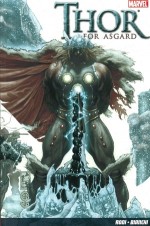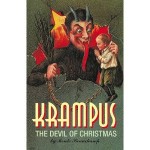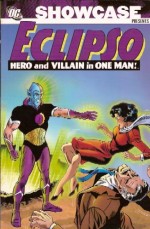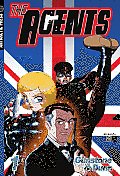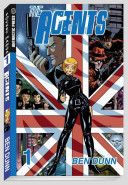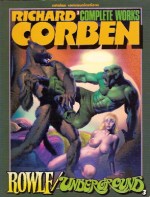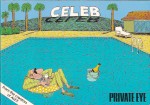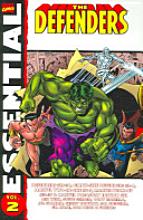
By Len Wein, Steve Gerber, Sal Buscema & various (Marvel)
ISBN: 978-0-7851-2150-1
Last of the big star-name conglomerate super-groups, the Defenders would eventually number amongst its membership almost every hero – and a few villains – in the Marvel Universe. No surprise there then since the initial line was composed of the company’s major league bad-boys: misunderstood, outcast and often actually dangerous to know.
For Marvel in the 1970s, the outsider super-group must have seemed a conceptual inevitability – once they’d finally published it. Apart from Spider-Man and Daredevil (both of whom come visiting in this tome) all their heroes regularly teamed up in various mob-handed assemblages, and in the wake of the Defenders’ success even more super-teams featuring pre-existing characters would be packaged – the Champions, Invaders, New Warriors and so on… but never with so many Very Big Guns…
The genesis of the team in fact derived from their status as publicly distrusted “villainsâ€, and they never achieved the “in-continuity†fame or acceptance of other teams, but that simply seemed to leave the creators open to taking a few chances and playing the occasional narrative wild card.
This second semi-chronological monochrome masterpiece collects a wealth of material from a large list of sources: Giant Sized Defenders #1-5 (not 1-4 as it so embarrassingly states on the cover), Defenders #15-30, Marvel Two-In-One #6-7, Marvel Team-Up #33-35 and Marvel Treasury Edition #12 and opens with a stunning combination of highly readable reprints wrapped in a classy framing sequence by Tony Isabella, Jim Starlin & Al Milgrom.
Giant Sized Defenders #1 (cover-dated July1974) begins with Stan Lee, Jack Kirby & Dick Ayers’ ‘Banished to Outer Space’ from The Incredible Hulk #3, followed by a brilliant 1950s Bill Everett Sub-Mariner fantasy-thriller ‘Bird of Prey!’ From there the focus switches to Dr. Strange for the Denny O’Neil scripted Steve Ditko mini-masterpiece ‘To Catch a Magician!’ (Strange Tales #145) and the concoction concludes with a big battle as the three stars plus sorcerer’s apprentice Clea and the valiant Valkyrie dispatch a self-inflicted mystic menace.
After a splendid double-page pin-up by Sal Buscema the regular epics resume with Defenders #15 and a two-part duel manic mutant Magneto who first institutes a ‘Panic Beneath the Earth!’ courtesy of writer Len Wein, Buscema & Klaus Janson, leading X-Men mentor Charles Xavier to enlist the outcast heroes aid.
The concluding clash includes the Brotherhood of Evil and ‘Alpha the Ultimate Mutant’ (inked by Mike Esposito) after which Giant Sized Defenders #2 (October1974) positively astounds with the superb supernatural thriller ‘H… as in Hulk… Hell… and Holocaust’ wherein Wein, Gil Kane and Janson pit the always-embattled Jade Giant against the sinister Sons of Satanish and the Defenders must perforce call on Daimon Hellstrom, Son of Satan, for some highly specialised assistance…
In Defenders #17 the core-group of Dr. Strange, Hulk, Valkyrie and reformed bad-boy Nighthawk engaged with and then enlisted the aid of Hero for Hire Luke Cage in ‘Power Play’ (Wein, Buscema & Dan Green) wherein the bombastic Wrecking Crew’s decimation of New York’s prime real estate while hunting for a hidden super-weapon led to a spectacular ‘Rampage!‘ before the furious finale (Chris Claremont, Wein, Buscema & Janson) found everybody frantically ferreting out the location of a deadly ‘Doomball!’
Immediately afterwards, Strange, Clea and Fantastic Four lynchpin The Thing encountered a disharmonious cosmic challenge in Marvel Two-In-One #6’s ‘Death-Song of Destiny’ (by Steve Gerber, George Tuska & Esposito) that concluded in #7 with ‘Name That Doom!’ (Sal Buscema pencils) as Valkyrie joined the melee just in time to cross swords with the egregious Enchantress and Executioner…
The aftermath of that eldritch encounter spilled over into Defenders #20 as Gerber came aboard to begin a truly groundbreaking run of stories. ‘The Woman She Was…’ (Buscema & Vince Colletta) started to unravel the torturous backstory of Valkyrie’s unwitting human host Barbara Norris during a breathtakingly bombastic battle that also reanimated the diabolical threat of the Undying Ones (see Essential Defenders volume 1 for details).
Steve Gerber was a uniquely gifted writer who combined a deep love of Marvel’s continuity minutiae with irrepressible wit, dark introspection and measured imagination and surreality. His stories were always at the extreme edge of the company’s intellectual canon and never failed to deliver surprise and satisfaction.
In Defenders #21 he began a long and epically peculiar saga with ‘Enter: the Headman!’ (illustrated by Buscema & Sal Trapani) wherein a trio of thematically linked scientists and savants, all “stars†of Marvel’s pre-superhero fantasy anthologies, opened their insidious campaign of conquest and vengeance by driving the city temporarily insane…
Before the next chapter however, a brace of extended sagas play chronological catch-up here: firstly ‘Games Godlings Play!’ from Giant-Size Defenders #3 (written by Gerber, Starlin & Wein with art from Starlin, Dan Adkins, Don Newton & Jim Mooney) with Daredevil joining Strange, Valkyrie, and Sub-Mariner to save the Earth from the Grandmaster, a cosmic games-player whose obsession with gladiatorial combats pitted the heroes against intergalactic menaces from infinity… and beyond.
Then follows a more down-to-Earth tale as the ex-Avenger Yellowjacket popped in to help crush insane criminal genius Egghead and Nighthawk’s old gang the Squadron Sinister on ‘Too Cold a Night for Dying!’ (Giant Sized Defenders #4, by Gerber, Don Heck & Colletta).
Marvel Team-Up #33-35 come next; a triptych of tales by Gerry Conway, Buscema and Colletta opening with Nighthawk and Spider-Man asking ‘Anybody Here Know a Guy Named Meteor Man?’, leading the webslinger to an inflammatory death-cult and requiring Valkyrie to help mop up the sky-borne bandit in ‘Beware the Death Crusade!’.
MTU #35 revealed how Dr. Strange and The Human Torch cleaned out that fiery ‘Blood Church!’ whilst Valkyrie languished in the cultist’s dungeon dimension…
Meanwhile, in Defenders #22’s ‘Fangs of Fire and Blood!’ (Gerber, Buscema & Esposito) the secret society known as the Sons of the Serpent began another hate-fuelled racist terror-pogrom, forcing the outcast champions into an uncomfortably public response in ‘The Snakes Shall Inherit the Earth!’ with Yellowjacket returning to confront his old enemies (See Essential Avengers volume 2).
Even with his assistance the Defenders were defeated and left ‘…In the Jaws of the Serpent!’ (inked by Bob McLeod) necessitating a nick-of-time rescue by Daredevil, Luke Cage and Daimon Hellstrom before the epic ended in a stunning twist as ‘The Serpent Sheds its Skin’ (inked by Jack Abel).
Giant Sized Defenders #5 was another diverse-hands production with the story ‘Eelar Moves in Mysterious Ways’ credited to Gerber, Conway, Roger Slifer, Wein, Claremont & Scott Edelman. Dependable Don Heck & Mike Esposito drew the satisfyingly cohesive results: how the Defenders met with future heroes Guardians of the Galaxy in a time-twisting disaster yarn that set up the next continued arc for the monthly comicbook…
‘Savage Time’ (Defenders #26 by Gerber, Buscema & Colletta) saw Hulk, Strange, Nighthawk and Valkyrie accompany the Guardians back to 3015AD in a bold bid to liberate the last survivors of mankind from the alien, all-conquering Badoon: a mission which opened with ‘Three Worlds to Conquer!’, became infinitely more complicated when ‘My Mother, The Badoon!’ revealed the sex-based divisions that so compellingly motivated the marauding lizard-men and triumphantly climaxed in the stirring ‘Let My Planet Go!’
The pressures of producing regular comics is staggering and constant with the slightest communications delay, illness, personal emergency or even work lost in transit causing all manner of costly hiccups. During the 1970s these “Dreaded Deadline Dooms†occurred all too often and in response Marvel instituted a policy of keeping one-size-fits-all, complete stories for every title in “inventoryâ€: i.e. stashed in a drawer ready to use in an emergency…
Designed to fill pages on time but produced with the intention of never being used, most of them were not that good…
‘Gold Diggers of Fear!’ (Defenders #30, by Bill Mantlo, Sam Grainger & Jack Abel) pitted Strange, Hulk, Nighthawk and Valkyrie against Tapping Tommy, a high-tech assassin who based his modus operandi and weaponry on Busby Berkeley musical numbers…
The 1970s were strange: When Gerber’s eccentric throwaway character Howard the Duck proved popular enough to support his own series it quickly became one of Marvel’s top sellers. So much so that when the 1976 Presidential race began fans began a campaign to nominate the moody mallard through a Write-in Vote. Their satirical slogan was “Get Down, America!â€
This bizarrely appealing volume ends with Marvel Treasury Edition #12, originally a tabloid-sized special which followed Howard’s reluctant bid for the Oval Office in ‘The Duck and the Defenders’ (Gerber, Buscema & Janson); an hilarious guest-star stuffed extravaganza pitting the World’s Weirdest Heroes against a dryly sardonic team of mystic wannabes – comprising Sitting Bullseye, Tillie the Hun, The Spanker and their implausible guru Dr. Angst – all bound and determined to frustrate the will of the masses and gain ultimate power themselves…
It’s not serious Fights ‘n’ Tights but it is seriously funny.
For the longest time The Defenders was the best and weirdest superhero comicbook in the business, and this bitty, unwieldy collection was where it all started. The next volume would see the inspirational unconventionality reach stellar heights…
If you love superheroes but crave something just a little different these yarns are for you… and the best is still to come.
© 1974, 1975, 1976, 2006 Marvel Characters, Inc. All Rights Reserved.
